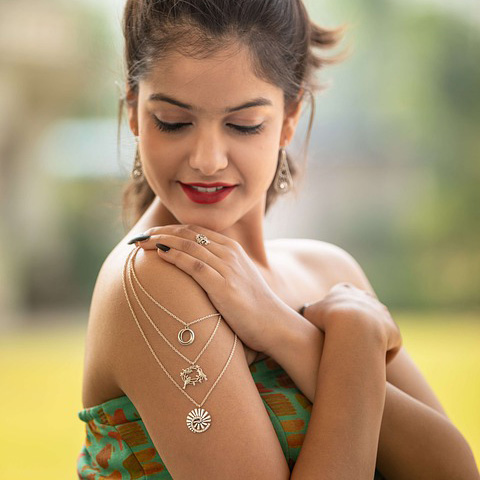The most commonly used setting for solitaire engagement rings is the prong setting, sometimes referred to as a claw setting. Prong settings are designed to secure your diamond (or other center stone) in place with small metal appendages. Seems simple enough, but in fact there are a variety of options to choose from when selecting a prong setting. So, how do you know if this type of setting is right for you? We’ll try to help make your decision easier by breaking down the various types of this common engagement ring setting.
Types of Prong Settings
- 4-prong setting- when it comes to prong settings, four prongs are most popular. This is because fewer prongs means your center diamond will be more visible. Four prong settings are recommended for diamonds that weigh 1 carat or less, as heavier diamonds may require additional support. If you have a four-prong setting, it’s important to occasionally check your prongs for frailty or instability. Because there are fewer of them, if one of them fails, you could risk losing your center stone.
- 6-prong setting- the six-prong setting is a classic solitaire ring setting. Commonly referred to as the Tiffany setting, the six-prong design is ideal for keeping your diamond safe and snug in its place. One disadvantage to this setting is that the greater number of prongs makes them more obvious at first glance.
- More than six prongs- it is less common to see rings with more than six prongs, though they do exist. Typically, these rings have stones larger than 1 carat that they are supporting. Generally, the more prongs you have, the safer your gemstone will be. However, prongs do interfere with the visibility of your center stone. Depending on the size of your center stone, consider how you can balance a great view of your diamond with the safest setting available.
- V-shaped prongs- if you have a fancy cut diamond, v-shaped prongs are ideal for protecting it from harm. Diamond cuts with sharper corners, like a marquise or pear-shaped diamond, require extra protection as they are more susceptible to chipping.
- Specialty prongs- if you’re the type of person who appreciates small details, you might want to consider uniquely shaped prongs for your engagement ring. For example, double claw prongs nicely compliment round solitaires and emerald cut diamonds, while heart shaped prongs add an extra touch of romance. Other styles, like fishtail prongs, are frequently featured in antique and vintage engagement ring designs.
Choosing the Right Metal
Another factor to consider when deciding on a prong setting is the type of metal being used. Because prongs are small and vulnerable to damage, stronger metals are ideal for these settings. Platinum is the most durable metal, followed by white gold. Unfortunately, yellow gold is slightly softer and may be more likely to break or require repair. Prongs tend to need repairing or re-tipping at some point, but you can save yourself some hassle just by choosing the sturdiest metal.
What to Look Out for When Choosing a Prong Setting
The most important detail to look for when choosing a prong setting is to be sure your stone(s) are secure. There should be no wobbling or rattling noise with movement. The table of the stone should be flush with the ends of the prongs. The stone should not be raised above or sunken below the prongs. Prongs that are too short or too long can be easily damaged, so be sure they’re just the right size. If you’re shopping for vintage or antique engagement rings, check the integrity of the prongs before buying. These pieces may have weakened over time, so checking this before you make off with your purchase is wise.
Shop the Best Engagement Rings in San Diego
There’s no better place to shop engagement rings in San Diego than Leo Hamel Fine Jewelry & Engagement Rings Store. Our staff has the knowledge and experience to assist you in finding the ring you’ve always dreamed about. We’ll help you navigate all of the fine details, whether it’s deciding on the number of prongs or choosing their shape and size. Engagement ring shopping can be tricky, and you’ll undoubtedly have questions. At Leo Hamel’s, we’re here to help guide you through the process. Visit our showroom today and browse our amazing selection!
source https://www.leohamel.com/blog/index.php/2019/01/tips-for-choosing-the-perfect-prong-setting/

No comments:
Post a Comment